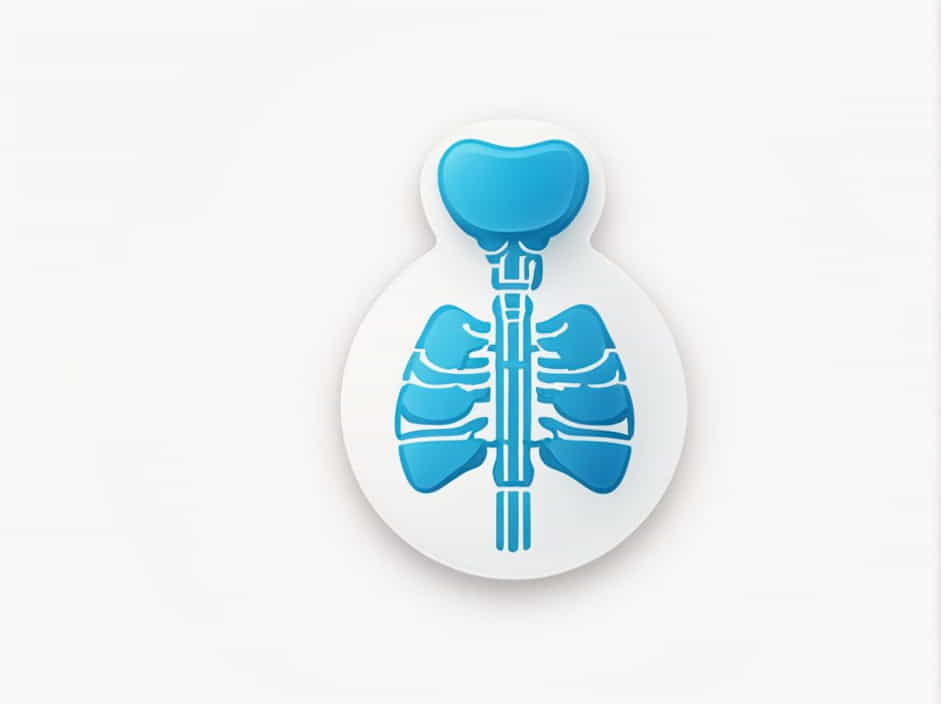The thyroid gland is a vital endocrine organ responsible for regulating metabolism, growth, and energy production. It consists of two lobes connected by a thin band of tissue called the isthmus. The vertebral level of the isthmus of the thyroid gland is an important anatomical landmark with clinical significance in surgery, imaging, and pathology.
In this topic, we will explore the location, structure, function, and clinical relevance of the thyroid isthmus, along with conditions affecting it and related medical procedures.
Anatomical Location of the Isthmus of the Thyroid Gland
1. Vertebral Level
The isthmus of the thyroid gland is typically located at the level of the 2nd and 3rd tracheal rings, corresponding to the vertebral levels of C6 to T1. However, in most individuals, the isthmus is positioned around the C7 to T1 vertebral level.
2. Structural Connection
The isthmus serves as a bridge between the right and left lobes of the thyroid. While it is often thin, its thickness and position can vary between individuals.
3. Relation to Surrounding Structures
The thyroid isthmus is closely related to several key anatomical structures, including:
- Trachea – Lies directly in front of the trachea, covering the 2nd to 4th tracheal rings.
- Larynx – Positioned below the cricoid cartilage.
- Recurrent laryngeal nerves – Located posteriorly, making them vulnerable during thyroid surgeries.
- Blood vessels – Supplied by branches of the superior and inferior thyroid arteries.
Functions of the Isthmus of the Thyroid Gland
Although the isthmus does not produce hormones independently, it plays an essential role in:
- Providing structural integrity to the thyroid gland.
- Facilitating blood and lymphatic flow between the two lobes.
- Allowing even distribution of thyroid hormones produced in the lobes.
Clinical Significance of the Thyroid Isthmus
1. Thyroid Surgery and the Isthmus
The isthmus is an important landmark in thyroidectomy (removal of the thyroid) and other neck surgeries. Surgeons must carefully navigate the isthmus to avoid damaging the trachea and nearby nerves.
2. Thyroid Nodules and Isthmus Involvement
Thyroid nodules can sometimes develop within the isthmus. Isthmic nodules are of clinical concern because:
- They have a higher chance of malignancy than nodules in the lobes.
- Their location over the trachea can cause breathing or swallowing difficulties if they enlarge.
3. Thyroid Cancer and the Isthmus
Certain types of thyroid cancer, such as papillary carcinoma, may originate in the isthmus. If cancerous growth is detected, a total or partial thyroidectomy may be required.
4. Goiter and Enlargement of the Isthmus
A goiter is an enlargement of the thyroid gland that may extend into the isthmus, causing:
- Swelling in the lower neck.
- Pressure on the trachea, leading to breathing difficulties.
- Dysphagia (difficulty swallowing) if it compresses the esophagus.
5. Imaging and Diagnosis
The thyroid isthmus is examined using:
- Ultrasound (USG) – Detects nodules, cysts, or abnormal growths in the isthmus.
- CT or MRI scans – Used to assess cancer spread or goiter enlargement.
- Fine-needle aspiration (FNA) biopsy – Determines if an isthmic nodule is benign or malignant.
Variations in the Position of the Thyroid Isthmus
Although the isthmus is usually found over the 2nd to 4th tracheal rings, variations exist:
- In some individuals, the isthmus may be absent.
- It may be higher or lower than the standard position.
- It can be thicker or more fibrous depending on genetic and environmental factors.
Common Conditions Affecting the Thyroid Isthmus
1. Isthmic Thyroiditis
Inflammation of the thyroid isthmus can occur due to autoimmune diseases such as:
- Hashimoto’s thyroiditis – Leads to hypothyroidism.
- Graves’ disease – Causes hyperthyroidism.
2. Thyroid Cysts in the Isthmus
Fluid-filled cysts can form in the isthmus and may require drainage or surgical removal if they grow too large.
3. Thyroglossal Duct Cysts
A congenital condition where remnants of embryonic thyroid tissue persist in the isthmus, sometimes requiring surgical removal.
Protecting Thyroid Health
To maintain a healthy thyroid gland, including the isthmus, consider the following:
1. Proper Nutrition
A balanced diet supports thyroid function:
- Iodine-rich foods (seafood, dairy, iodized salt) prevent goiter.
- Selenium (nuts, eggs, fish) supports thyroid hormone metabolism.
- Zinc and iron (red meat, legumes, spinach) help regulate thyroid activity.
2. Regular Medical Checkups
Routine thyroid screenings help detect abnormalities early and prevent complications.
3. Avoiding Environmental Toxins
Exposure to certain chemicals, pollutants, and radiation may increase the risk of thyroid disorders. Using filtered water and reducing plastic consumption can help minimize exposure.
4. Managing Stress
Chronic stress can affect thyroid hormone levels, so practicing meditation, exercise, and proper sleep hygiene is beneficial.
When to Seek Medical Attention
If you experience unexplained weight changes, neck swelling, difficulty swallowing, or persistent fatigue, consult a healthcare provider for thyroid evaluation.
The isthmus of the thyroid gland, located at the C7-T1 vertebral level and spanning the 2nd to 4th tracheal rings, plays a crucial role in thyroid function and structure. Understanding its anatomy, clinical significance, and potential health concerns helps in early diagnosis and effective treatment of thyroid-related conditions.
Maintaining thyroid health through proper nutrition, regular checkups, and stress management is essential for overall well-being. If any abnormalities are detected in the isthmus region, seeking medical advice promptly can prevent complications and ensure proper thyroid function.
